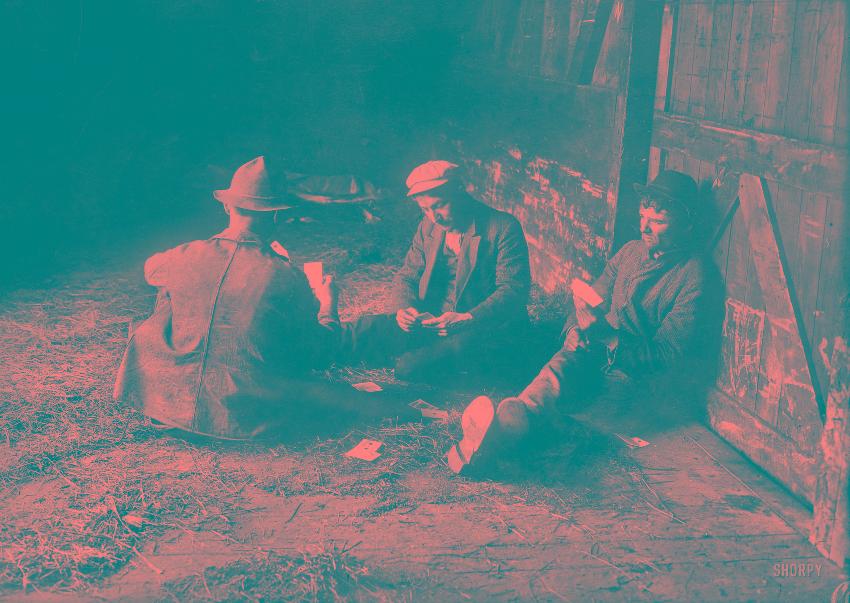Since 2015 is the year of context, let me put things in perspective. To accurately answer this question one has to understand not only the amount of wealth John D. Rockefeller possessed but also the living conditions of 1915.
As wealthy as Rockefeller
 .
.From 1859 to 1879, Rockefeller bought as many refineries as was possible. If the competitor refused to sell, he would engage in a price war, even selling at a loss to force him/her competitor out of business. Rockefeller demanded rebates and lower prices from the railroads, the main distribution system for oil at the time. When they refused, he built his own system of pipelines, our current oil distribution system.
In 1911, Rockefeller produced 1.5% of the USA GDP. His wealth of $900 million at that time translates to $336 billion for adjusted inflation for 2007! No one in history has ever controlled the level of wealth Rockefeller controlled. Not the pharaohs of Egypt, the emperors of china, or the kings of England! Today’s richest man, Bill Gates, is only worth $80.5 billion, according to Forbes.
Living in 1915
Before rushing to answer the question let’s analyze the conditions in which the population was living in 1915 because when one considers the health, sanitation and labor conditions of 1915 the question becomes a trickier…
Back in 1915, the primary occupation was farming but this activity was arduous and physical prior to the wide adoption of the combustion engine during the 1950s. Other than farming, one had the choice to work in a factory producing steel or in a mine extracting coal or to join the military as very little service jobs were in existence.
The labor conditions on the fields and mines were also very difficult. After various unsuccessful attempts to improve the working conditions (both the Hammer v. Dagenhart, 247 U.S. 251 and the Bailey v. Drexel Furniture Co., 259 U.S. 20 passed respectively in 1918 and in 1922 by the Congress were declared unconstitutional by the Supreme Court and the constitutional amendment prohibiting child labor proposed by the Congress in 1924 wasn’t ratify by the State), the Congress finally passed the Fair Labor and Standards Act of 1938, which introduced the forty-hour workweek, established a national minimum wage, guaranteed “time-and-a-half” for overtime in certain jobs, and prohibited oppressive child labor. But up until 1938, a workweek was usually a 12-hour day, 7 days straight.
The hygienic and sanitary conditions were also very rudimentary and in many cases residential building codes and sanitation projects were a response to tuberculosis and other diseases. In fact, vaccines for diphtheria, tuberculosis, yellow fever, influenza, polio, measles and chicken pox had not been invented yet and neither was penicillin. So, if one didn’t die from exhaustion caused by the hard work of the mines or fields, one would die of viral transmission or microbial infection or by a combination of both. As a result, life expectancy, which was very short at the time, rarely exceeded 52 years for men and 56 years for women.

However, there were far greater costs to living in 1915 than the inhuman working conditions or the lack of vaccines, especially if you were black, Jewish or gay. The KKK was in full effect in the South and segregation was all the rage. Blacks in the south had to live with the constant treat of being lynched, tortured, dismembered or hung publicly. Jews had a hard time finding work and many of them had to live with their identity hidden. Gays were not socially accepted and could be sentenced to electro shock therapy or chemical castration. Considering all this, being a garbage collector in 2015 seems like a cakewalk.
Poor in 2015.
I do not want to minimize the suffering that comes with poverty. When we moved to the States in 2005, we were a family of 5 living in a 400 square feet one bedroom apartment. My mother worked two jobs in order to support us. I worked full-time while being a full-time college student. I would never want to go back to that situation. So, if you are poor know that I understand.
In reality, poverty has more to do with geography than income because the discrepancy between countries is significant. For example, in the United States poor is defined as a family of 4 living under $23,300 but in Haiti living off that level of income would be considered approaching the middle class. Another example is that of Zimbabwe. One can become a trillionaire in Zimbabwe, but if you are born poor in that same country, the chances of you finding help from the social safety net are none. On the contrary, if you are a born Saudi or Qatari or even Swedish (as Sweden is debating a similar law), the state will provides you with a minimum income whether you work or not. So, one could reasonably argue whether poverty even exists in countries like Qatar and Saudi Arabia where mandatory income levels have been instituted.

Now, let’s adjust our assumptions about being poor in North America, excluding Mexico, in 2015 and let’s discuss the living standards of a regular American living below the poverty line.
Let’s start by looking at the type breakfast we consider unhealthy, for instance a Chinese buffet. Although we consider them as unhealthy this kind of meal would have been fit for a king in 1915. The abundance of protein like chicken, fish and beef or sugar and grains, as we enjoy it today, is only a recent phenomenon. Today, in the United States, almost everyone has access to a basic level of comfort that is much higher than that of 1915, even for the richest people of the time.
For instance, we are warm in winter and cool in the summer, we have access to clean water, we can watch the World Cup from the comfort of our living rooms and communicate with friends from far away through free and fast services like email.
The amount of progress humanity has accomplished over the last hundred years is often underestimated. The world population was less the 2 billion in 1915. Today it is more than 7 billion and this would never have been possible without all the advances that were made in agriculture, medicine, transportation, communication, education and urbanization.
Another way to measure the level of the comforts in our time is, for example the fact that in 2015 there is no debtors prison. Consider how rich a society has to be for this to be. Think about it, in 2015, one can borrow $600,000, not repay, and very little repercussions occur. Back in 1915 one could have been imprisoned for 14 years for stealing a cow according to Crimes Act 1900 — Sect 126. I do not condone defaulting on your debt. However, this being possible nowadays is a testament to the amount of wealth present in North America today.
So would you rather be rich in 1915 or poor in 2015? Obvious it depends on the country too, but if I had to pick, I would chose living in poor in 2015 because…
 .
.
…I can always get out of poverty in 2015 but I can’t get out of 1915.
However this is a rather trivial argument. Answers are far less important than questions. One’s quality of life is in direct proportion with the quality of questions he asks. Therefore the real question should be “would you rather be Bill gates today or be poor in 2115? »
Jonathan Fils-Aime
.
.







Comments